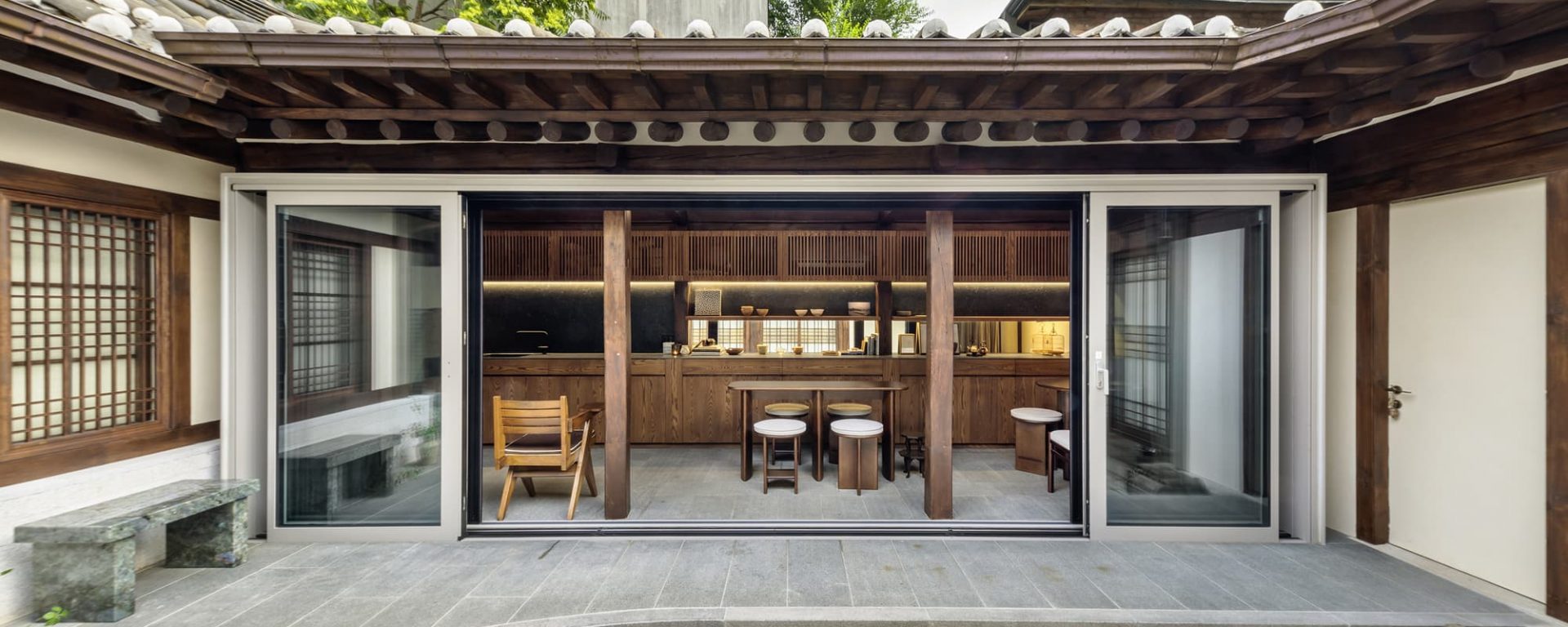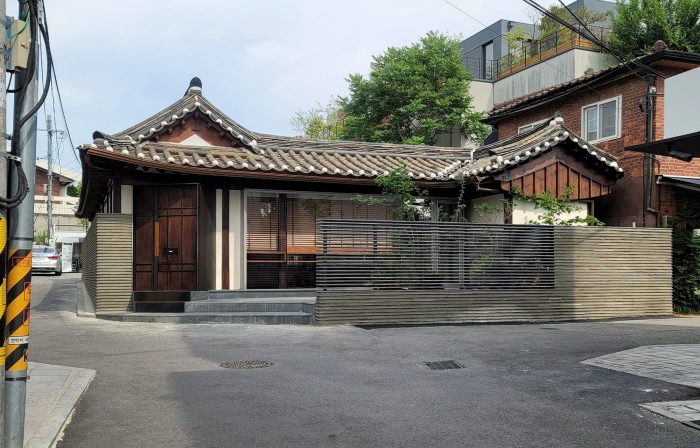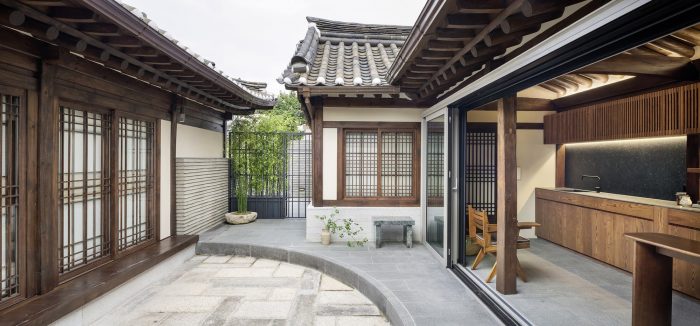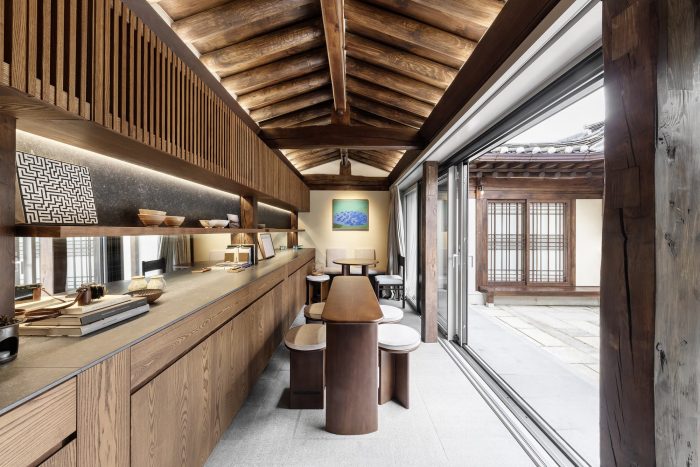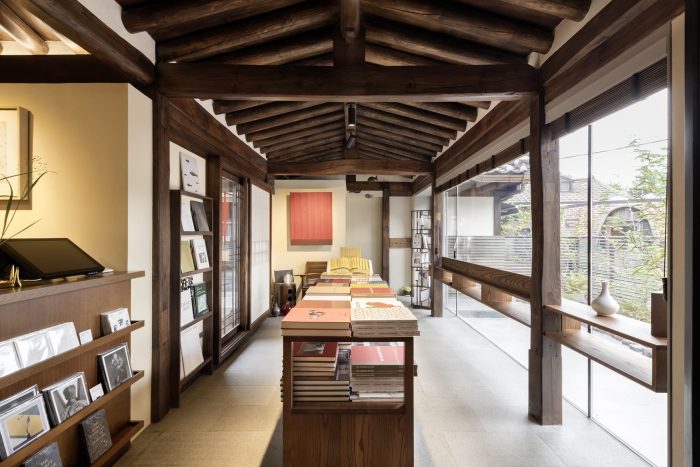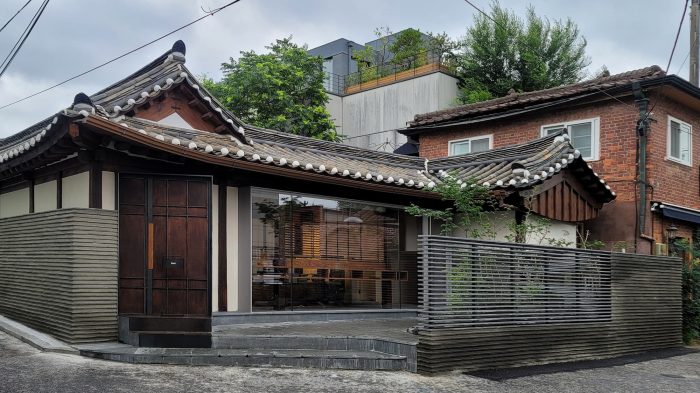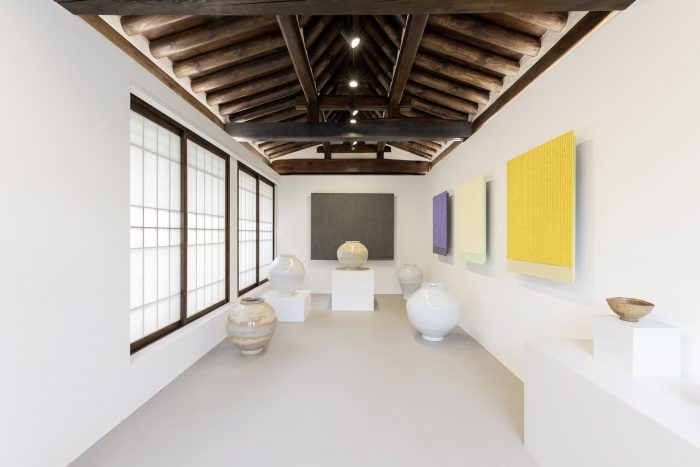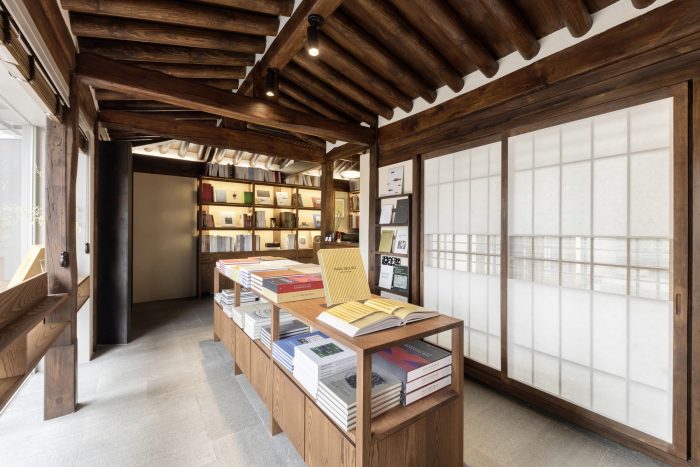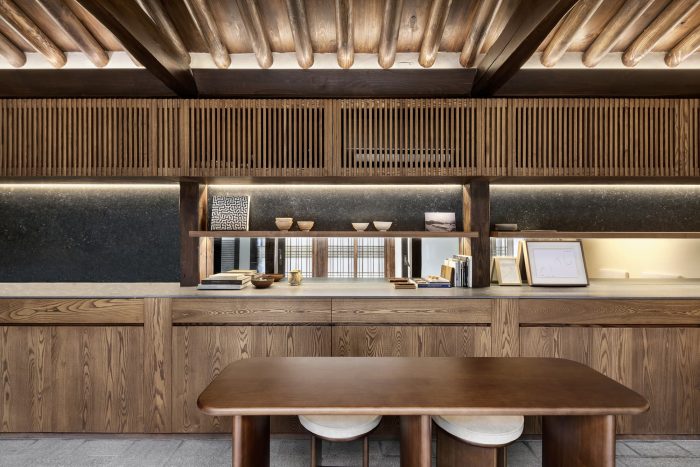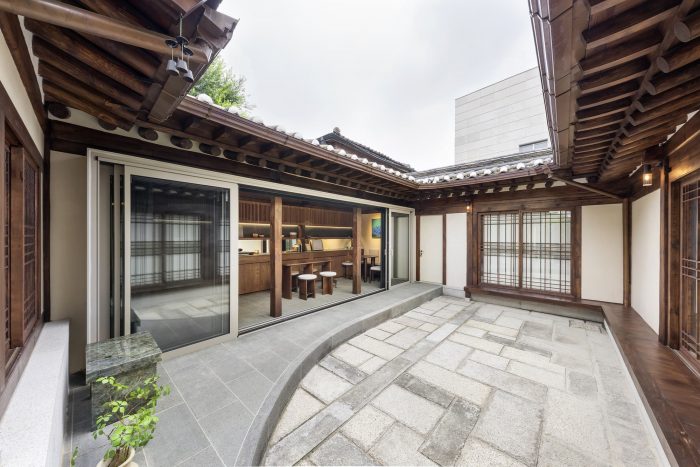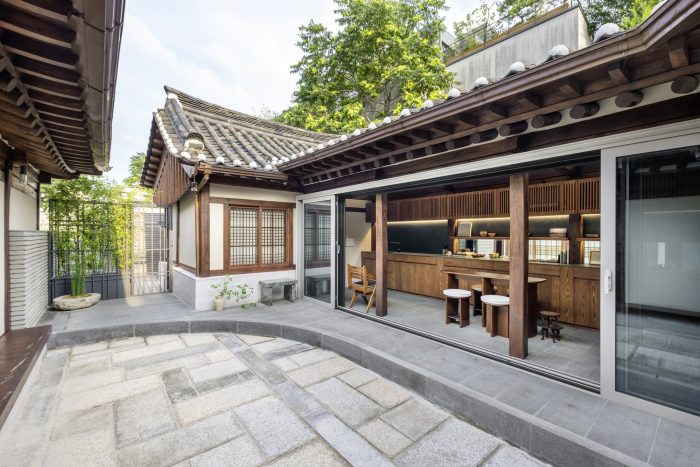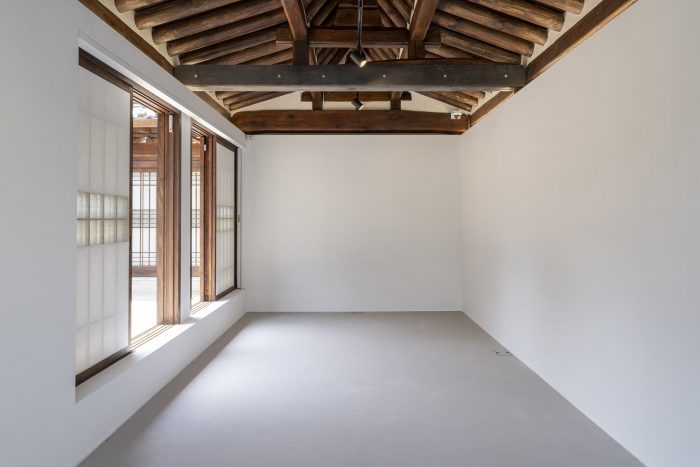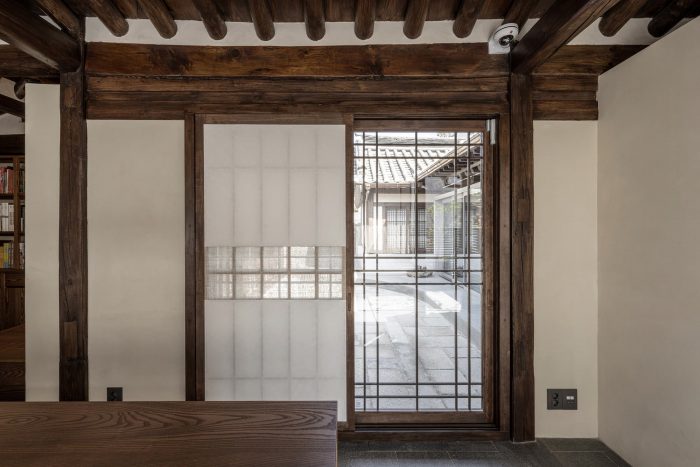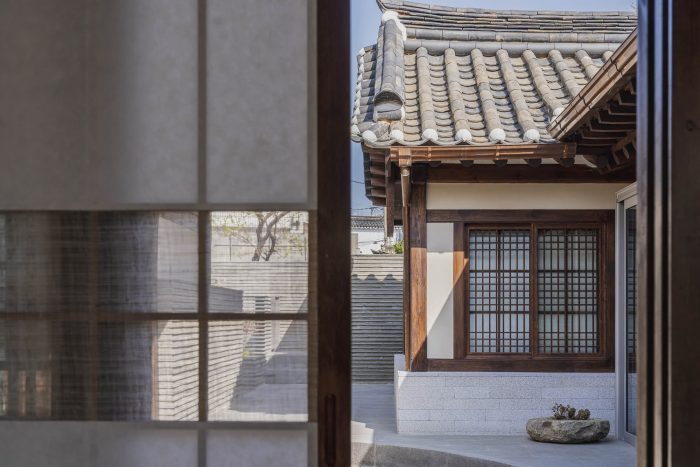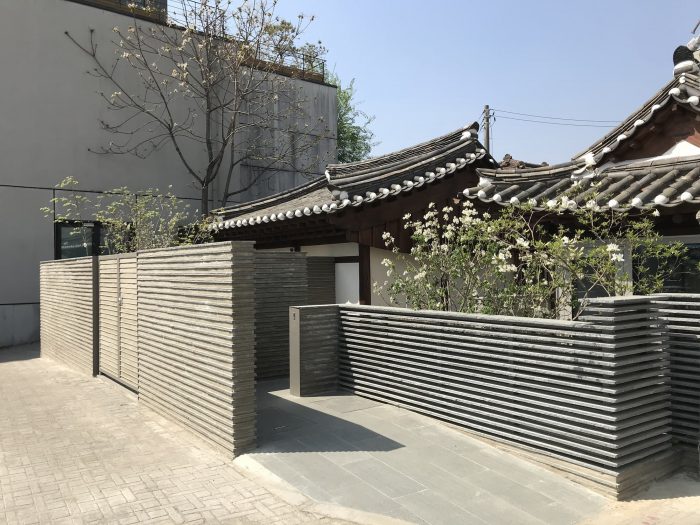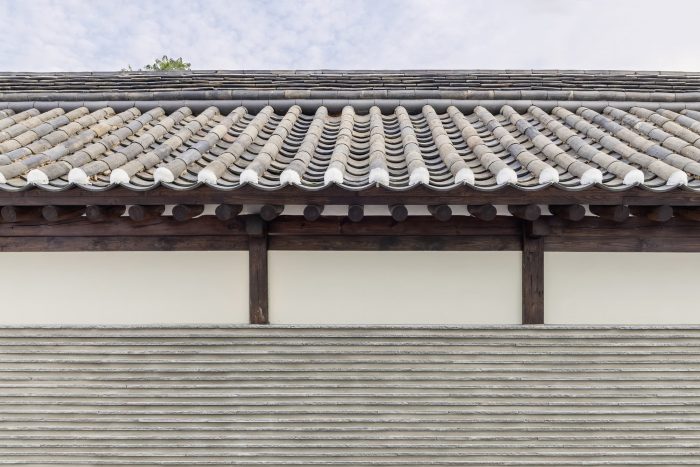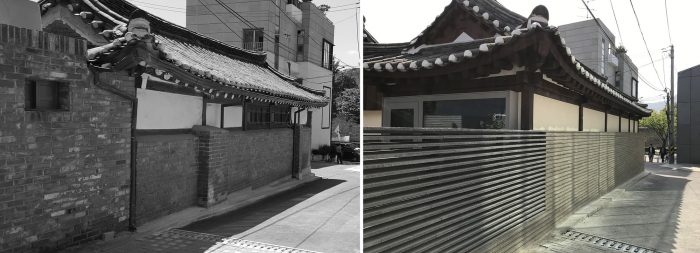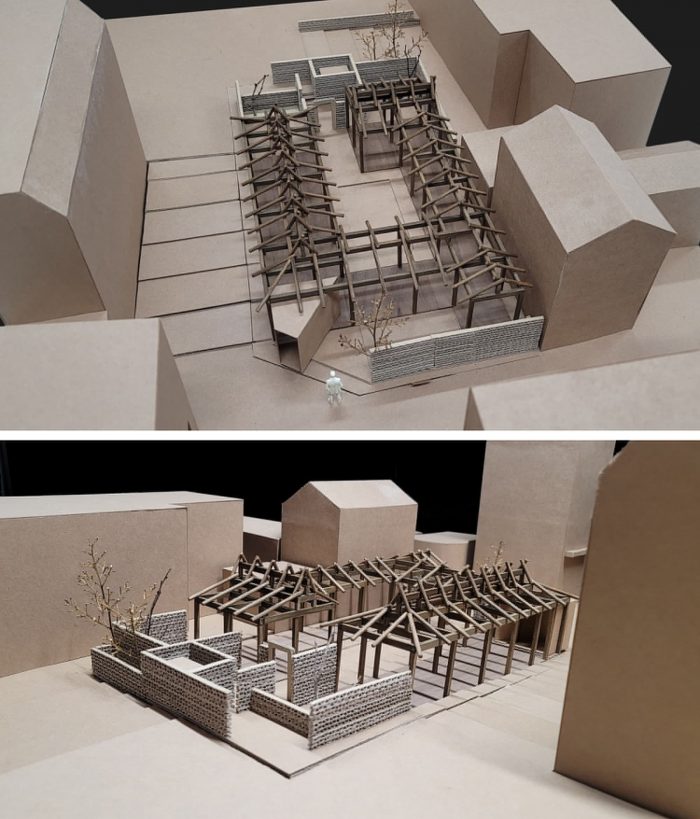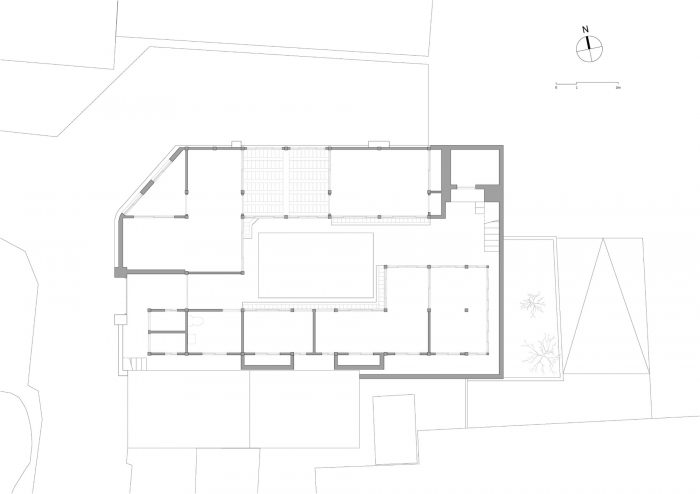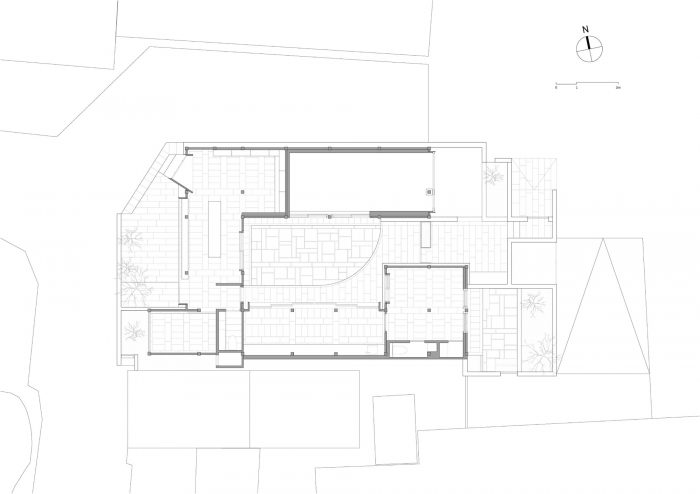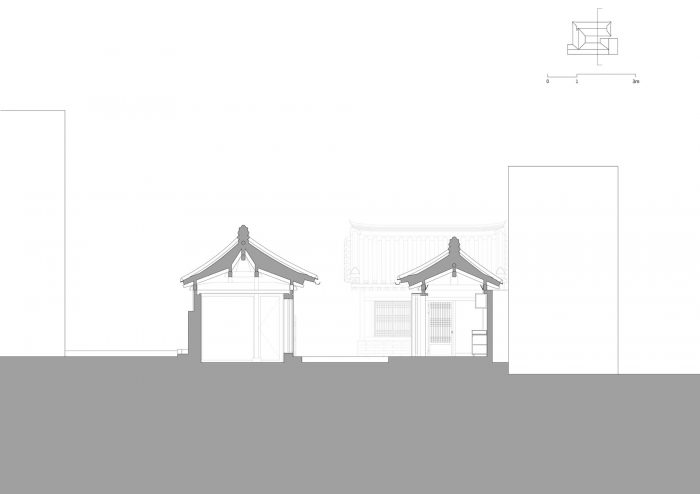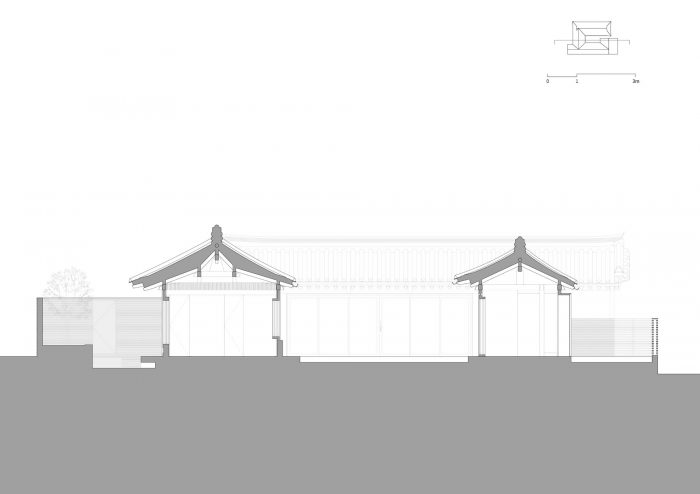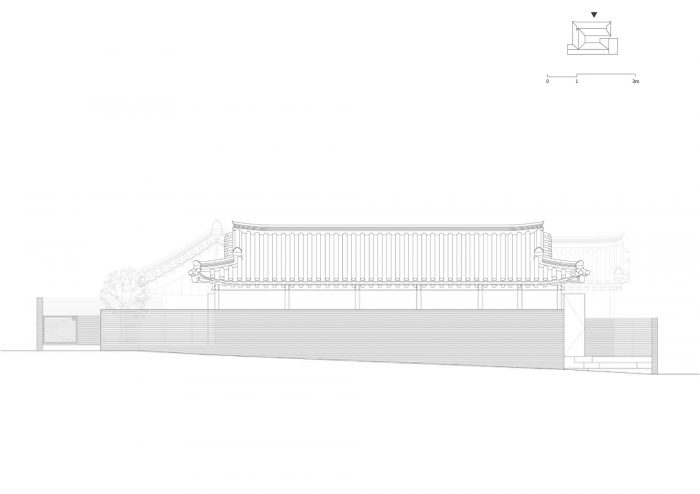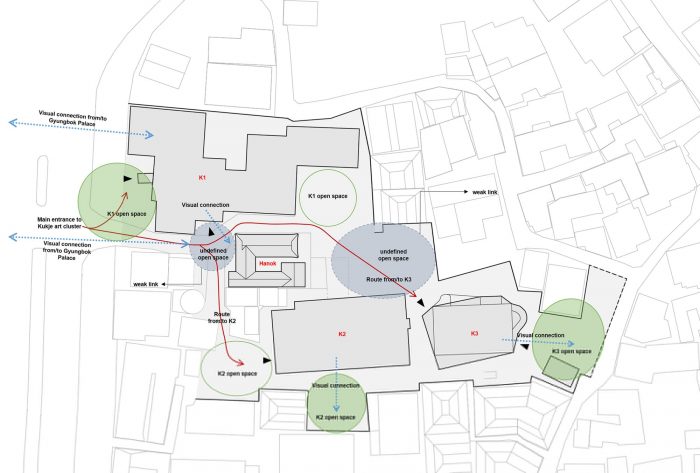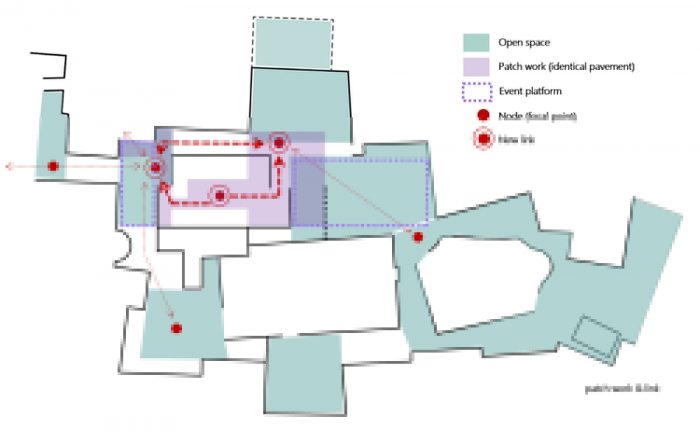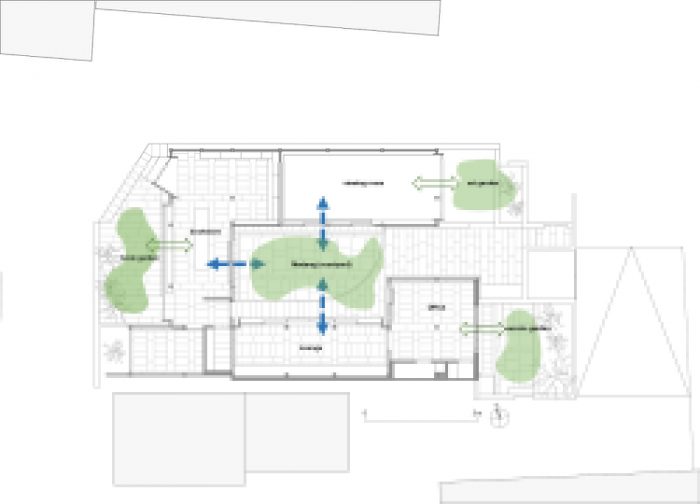Kukje画廊位于首尔的历史和文化中心,自1987年以来,按照K1、2和3的顺序扩大了画廊空间。[1]Song Hyun Jae是下一步;也就是把一个建于1935年的老[2]Hanok改造成文化空间。这个项目应该在由Kukje画廊形成的整个艺术集群的背景下理解。由于建筑错落有致,画廊之间的相互联系是松散的,游客对整个集群的空间意识也很低。另外,Kukje画廊所在的Sogyeok-dong地区面对着韩国最后一个王朝的主要宫殿Gyeongbokgung,所以根据该地区的地区单元规划,存在着保护传统的问题。因此,”城市方舟建筑师 “认为,这个项目应该发挥积极作用,作为一个当代媒介,加强画廊之间的空间联系,同时展现韩屋本身的传统美学。
Text description provided by the architects. Kukje gallery, located in the historical and cultural hub in Seoul, has expanded its gallery spaces in order of K1, 2 & 3 since 1987. [1]Song Hyun Jae is the next step; which is to renovate an old [2]Hanok built in 1935 into cultural spaces. This project should be understood in the context of the entire art cluster formed by the Kukje galleries. Due to the staggered construction, the interconnection between the galleries was loose and the visitor’s spatial awareness of the entire cluster was low. Also, the area of Sogyeok-dong, where Kukje gallery is located, faces Gyeongbokgung, the main palace of the last dynasty in Korea, so there was the issue of preserving tradition according to the District Unit Plan of the area. Therefore ‘urban ark architects’ thought that this project should play an active role as a contemporary medium for strengthening the spatial connection among the galleries while presenting the traditional aesthetics of the Hanok itself.
Song Hyun Jae是一个非常具有挑战性的项目,因为它必须在一个屋檐下容纳三个不同的项目:一个书店,一个观赏室,以及一个带有休息室的私人房间。这个小型的 “U “形哈诺克最初是为住宅而建,现在必须满足新的功能和体积。此外,当地非常严格的法规限制了对现有的结构布局和材料外观的任何过度改变。为了解决这些问题,”城市方舟 “专注于传统的空间结构和[3]马当。韩国传统建筑的精髓在于其刻意松散的空间维度,能够实现灵活多变的空间。在韩屋中,室内和室外的地板,包括被称为马当的室外院子都是重要的元素。楼层通过可移动的隔断窗和低矮的栅栏墙松散地界定,形成独立的室内和室外空间。而当需要其他功能时,地板会弹性地扩张,形成
Song Hyun Jae was a very challenging project as it had to accommodate three different programs under one roof: a bookstore, a viewing room, and a private room with a lounge. Originally built for residential purposes, this small ‘U’- shaped Hanok had to satisfy new functions and volumes. Moreover, very strict local regulatory matters limited any excessive changes from the existing appearance in terms of the original layout of structure and materials. To solve these problems, ‘urban ark’ focused on the traditional spatial structure and [3]Madang. The essence of Korean traditional architecture lies in its deliberately loose spatial dimension that enables flexible and versatile spaces. In Hanok, indoor and outdoor floors including an outdoor yard called Madang are important elements. The floor is loosely defined with movable partition windows and low fence walls to form individual indoor and outdoor spaces. And when other functions are needed, the floor expands elastically, creating
[1] Song Hyun Jae是这个项目的一个诗意的名字;意思是一个在弹奏韩国传统古筝时阅读和朗诵的房子。 [2] 通常情况下,Hanok指的是具有木质结构的传统韩国房屋。用传统细木工技术和材料建造的韩屋与20世纪初为缓解首尔等城市的拥挤状况而建造的现代韩屋并存。宋贤宰是后者的一个改造项目。 [3] 马当。主要是指韩国的独立屋或传统老房子的庭院。与日本和西方的庭院不同,韩式庭院是扩大内部日常生活的地方,在概念上被视为一个房间,即使它是室外。由于这个原因,马当这个词也被用于 “正在做某事的地方 “的成语意义上。 [1] Song Hyun Jae is a poetic name for the project; which means a house where you read and recite while playing the traditional Korean zither. [2] Usually, Hanok refers to a traditional Korean house with a wooden structure. Hanoks built with traditional joinery techniques and materials coexist with modern Hanoks built to relieve overcrowding in cities such as Seoul in the early 20th century. Song Hyun Jae is a renovation project of the latter. [3] Madang: It is mainly a courtyard of detached houses or old traditional houses in Korea. Unlike Japanese and Western gardens, Korean-style yards are places where daily life inside is expanded, and are conceptually regarded as a room even if it is outdoor. For this reason, the word Madang is also used in the idiomatic sense of ‘where something is being done’.一个新的空间,打破了空间内部和外部的明确界限。然而,尽管哈诺克的性质,不幸的是,自1935年以来的这段时间里,由于不礼貌的修改,旧住宅已经失去了它的原始外观和空间的丰富性。
A new space that breaks down clear boundaries within and outside the space. However, despite the nature of the Hanok, unfortunately, the old residence had lost its original appearance and spatial richness due to ill-mannered modification in the meantime since 1935.
为了满足新的要求,马当,一个小但精心设计的空旷空间,与包含必要功能的室内空间相结合。这些室内和室外空间通过它们之间像艺术画框一样的大框窗连接起来,并且它们被匹配到同一楼层。通过这种方式,空间在视觉和物理上都得到了扩展,可以灵活地拥抱其他活动。书店位于建筑的前面,作为欢迎公众的展示窗口,观看室和带有休息室的私人房间被安排在 “U “形的两边。每个项目都有一个独立的马当,但通过共享放置在韩屋中心的主马当来保持整体空间的完整性。
To meet the new requirements, the Madang, a small but elaborately designed empty space, is combined with the interior space containing the necessary functions. These indoor and outdoor spaces were connected through a large frame window like a picture frame of art between them, and they were matched to the same floor level. In this way, the space expands visually and physically to embrace other events flexibly. The bookstore is located in front of the building as a show window to welcome the public, and the viewing room and the private room with the lounge are arranged on either side of the ‘U’-shape. Each program with an individual Madang operates independently but maintains overall spatial integrity by sharing the main Madang placed in the center of the Hanok.
Song Hyun Jae以现代方式进行了精细的设计,继承了传统Hanok的材料美学和空间灵活性。过去的东西不应该因为其单纯的遗迹价值而被保存下来,而应该被重新发现和重新解释,成为构建现在的功能和审美感觉的材料。它展示了 “活着的过去,古老的未来”,仿佛它已经存在,这也是Kukje画廊和这个项目的建筑师的想法。因此,Song Hyun Jae不是作为传统修复的结果出现在我们面前,而是作为一个具有同样强度的当代建筑。现在,预计Song Hyun Jae将成为一个优雅的文化场所,加强Kukje画廊的品牌形象,同时构成历史区域的一部分景观。
Song Hyun Jae is finely designed in a contemporary way, inheriting the aesthetics of the materiality and spatial flexibility of the traditional Hanok. The past should not be preserved as stuffed because of its mere relic value but should be rediscovered and reinterpreted as a material for constructing the function and aesthetic sensibility of the present. It shows the ‘living past, old future’ as if it already existed and it was the idea of Kukje gallery and the architect for this project. Therefore, Song Hyun Jae comes to us not as a result of traditional restoration, but as a contemporary architecture with the same intensity. Now it is expected that Song Hyun Jae will become a classy cultural place that strengthens the brand image of Kukje gallery while composing part of the landscape in the historical area.
Architects: Urban Ark Architects
Area : 96 m²
Year : 2022
Manufacturers : Microtopping, 旭格(Schuco)
Construction : Chamooree
Landscape : Garden in Forest Co. Ltd.
MEP : YouSung Engineering
Architects : Hyunsoo Kim, Sungwoo Yim, Sun Hur
City : Jongno-gu
Country : South Korea

